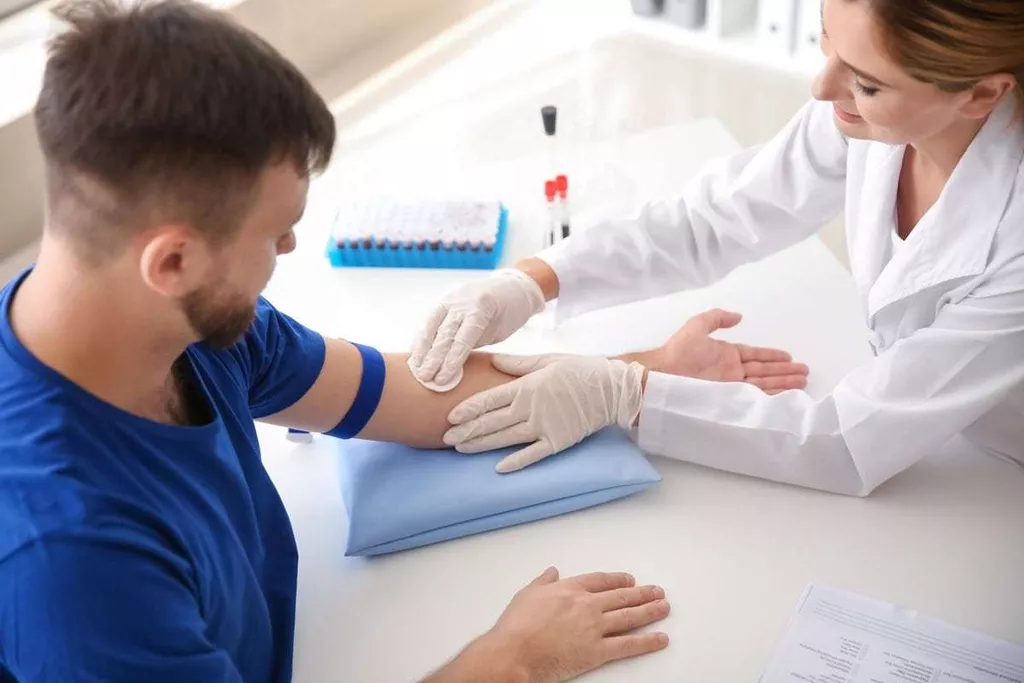The official definition accepted by most sport organisations and athletes is that doping is the violation of one of the anti-doping rules laid out in the World Anti-Doping Code. The WADA Code (2019) includes as its fundamental rationale the promotion of athlete health. In this view, health promotion is achieved by prohibiting athletes from using substances for which ‘medical or other scientific evidence, pharmacological effect or experience that the Use of the substance or method represents an actual or potential health risk to the Athlete’ (WADA, 2019, p.30). Ostensibly, this is related to the perceived health risks of doping substances, though it is also related to broader war on drugs style policies and politics (Coomber, 2014; Dimeo, 2007). The prevalence of doping is unclear, though there is a significant gap between prevalence estimated by researchers and the official testing results.
Public funding for sports stadiums: A primer and research roundup

Title IX, which was passed in 1972, promoted equal numbers of male and female college athletes and increased the number of female athletes. In 1972, there were ∼25,000 female high school athletes, in comparison to 3 million in 2000. (1) This number has been stable at 3 million in 2007, according to Title IX data.
Adverse Health Consequences of Performance-Enhancing Drugs
What happens to athletes who use performance-enhancing drugs – Courier Journal
What happens to athletes who use performance-enhancing drugs.
Posted: Thu, 28 Apr 2022 07:00:00 GMT [source]
Reichel et al (393) has reported a n SDS-PAGE method for detecting erythropoietin that also uses double immunoblotting chemiluminiscence. The method separates the erythropoietin glycoforms on the basis of their hydrodynamic volume. Chemiluminiscence produces a single broad band; the position of the band is relatively sensitive to the carbohydrate content of the erythropoietin (392). Genetic differences in testosterone metabolism can alter the T/E ratio and result in a false-negative test (356). Studies have linked deletion polymorphisms of uridine diphospho-glucurosyl transferase 2B17 (UGT2B17) (the major enzyme for testosterone glucuronidation) with significantly lower T/E ratios (357).
Find More Resources on Anabolic Steroids and Other Appearance and Performance Enhancing Drugs
- I didn’t really think about it too much, I just knew he was a well-respected doctor that worked with big champions over the years and that I should listen to him.
- This growing body of literature suggests that despite the singularity of the androgen receptor protein, tissue selectivity of ligand action can be achieved.
- Scientific Statements educate basic scientists, clinical scientists, and clinicians on the scientific basis of disease and on how this knowledge can be applied in clinical practice.
This reflects an individual/athlete-centred view of doping that places the policy focus and responsibility squarely on the athlete (Dimeo & Møller, 2018). Ignoring factors such as the level of competition or age of the athlete in question, further reinforces the potentially harm- and stigma-producing, punitive approach even in cases where the fair-play ideal is not really at stake. Of course, both of these discursive frameworks around drug use – as disease or deviance – locate pathology in the individual, not the environment. The physical and psychological adverse effects of anabolic androgenic steroids (e.g., kidney and liver damage, acne, gynecomastia, suppression of normal testosterone production, aggression, depression) are well established.

C. The types and patterns of PED use
Additional studies have reported increased sensitivity to cocaine (84) and amphetamine (85) in rats exposed to high doses of AAS. Thus, AASs may induce effects on the brain reward system that may render individuals Performance Enhancing Drugs susceptible to other drugs of abuse. The types of PEDs used by competitive athletes based on the WADA’s 2011 testing data (A) and by nonathlete weightlifters from a recently published study by Dr Pope (B).
Effects of Performance-Enhancing Drugs
In addition to AASs, nonathlete weightlifters and athletes also use human GH (hGH) and IGF-1 because these PEDs have recently become available on the black market at reduced cost (14). Similarly, some nonathlete weightlifters use the hormone insulin for its potential anabolic effects (15). Finally, some nonathlete weightlifters use clenbuterol, a β-adrenergic agonist that is thought to possess possible anabolic properties. Clenbuterol and other illegal stimulants, such as amphetamine, and some hormones, such as thyroid hormones, also have thermogenic (fat-burning) properties that make them popular among nonathlete weightlifters. A month or two later I was introduced to my first injection of a drug called EPO, which basically boosts your hematocrit, which brings red blood cells to your muscles.
- In addition to the methodologic problems that have limited the success of gene therapy to date (such as limited expression of the recombinant protein and gene silencing), many safety issues remain to be resolved (385, 404,–408).
- Human GH is a metabolic hormone in adults with fused epiphyses of the long bones.
- To come back and just enjoy cycling for that freedom, for that wind blowing through your hair, that’s pretty awesome.
- This is a trend mirrored in sport doping research that focuses heavily on motives and prevention at the individual level.
- Several microRNAs have been also linked to heart dysfunction in the form of myocardial ischemia, hypertrophy, fibrosis and arrhythmia [66].
- Decades of draconian punishments have failed to eliminate, or even consistently lower levels of recreational drug use within the general population; there were more than a half million deaths related to illicit drug use in 2017 alone (United Nations Office on Drugs & Crime, 2019).
Applying a random-effects model to these 10 studies, the analysis yielded an estimate that 32.5% (95% conference interval, 25.4%–39.7%) of AAS users develop AAS dependence. Applying this proportion to the above estimates of the overall American AAS-using population, it follows that in the United States alone, about 1 million men have experienced AAS dependence at some time. As noted in the analysis, virtually all of these AAS-dependent individuals are likely to be male, because only 2 of the 363 cases of AAS dependence found in the 10 pooled studies described above were female. Thus, the lifetime prevalence of AAS dependence in American men is likely in the same general range as that of HIV infection or of type 1 diabetes, both of which afflict fewer than 1 million American men (52, 53). In the largest Internet study, only 1 of 1955 male AAS users (0.05%) reported starting AAS use before age 15, and only 6% started before age 18 (39). In 5 other studies, collectively evaluating 801 AAS users, only 12 (1.5%) started before age 16, and 199 (24.8%) started before age 20.
- Additional physiological changes include the promotion of thromboxane A2 and thrombin, inducing a state of hypercoagulability [45].
- The chair selected a 6-member expert panel (approved by The Endocrine Society) with expertise in the use and health consequences of PEDs.
- More importantly, left ventricular hypertrophy and fibrosis have both been identified as risk factors to SCD [64,65], and therefore may be argued to be the sequelae of ongoing AASs use that results in the terminal event.
- Little did the MLB know that behind the scenes, Bonds and other athletes had been using a newly synthesized steroid, tetrahydrogestrinone (THG), designed specifically for potent anabolic effects and with anti-doping testing protocols in mind.
- While motivated by both shared and unique interests, systematic doping is similar to the phenomenon of Heroin Assisted Treatment (HAT), or the (tenuously) legal dispensing of pharmaceutical-grade heroin to individuals who have struggled with other modalities of opioid use treatment (Kilmer et al., 2018).
- More importantly, energy drinks often contain caffeine at a significantly higher concentration than either coffee or tea; the stimulant properties of other compounds in EDs, such as taurine, complicates matters further.
- The expert panel conducted its deliberations regarding the scientific statement content through multiple teleconferences, written correspondence, and a face-to-face meeting.
- Recently, the use of hGH by professional athletes has received attention in the media from players in the National Football League to Major League Baseball.
- A number of nonsteroidal SARMs, which display tissue-specific activation of androgen signaling, are in development (8, 13).
- Several factors may explain why the issue of PED use and its adverse health effects has remained neglected.
- It’s used for activity that involves quick bursts of movement, such as weightlifting or sprinting.
Occasional field observations have also documented strikingly aggressive or violent behavior in some AAS users who had no history of such behaviors. These have included cases of previously normal individuals committing murder or attempted murder (181, 199,–201) or displaying other uncharacteristically aggressive behavior https://ecosoberhouse.com/ while using AASs (169, 202,–204). Side effects of these nonsteroidal drugs include headache, nausea, nervousness, diarrhea, perspiration, hot flushes, and bone pain (88). Athletes may add epitestosterone to normalize their testosterone to epitestosterone (T/E) ratios, thus avoiding testosterone-use detection.



Legutóbbi hozzászólások